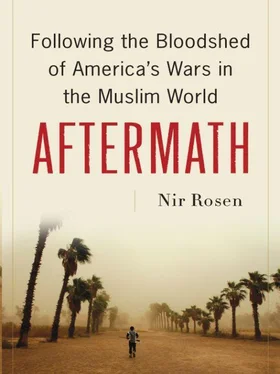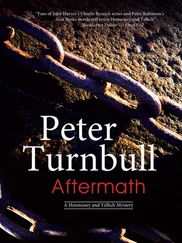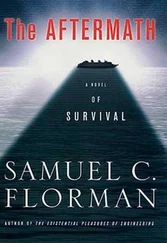In August 2005 rumors of a bomb caused a panic stampede among Shiite pilgrims on the bridge linking Adhamiya and Kadhimiya. Up to one thousand people drowned or were crushed to death. Leading Supreme Council cleric Jalaluddin al-Saghir mourned the dead in his sermon the next Friday, calling them “beloved” and condemning the sort of jihad that targets innocent women and children engaged in worship. He also singled out the defense minister, Saadoun al-Dulaimi, a Sunni, for allegedly letting criminals and Wahhabis infiltrate his ministry. Saghir said that the Interior Ministry—which was in the Shiite hands of the Supreme Council—should have been responsible for providing security for the area. Saghir did praise the people of neighboring majority-Sunni Adhamiya, however, for risking their lives to help save some of the drowning pilgrims. Leading Sunni cleric Ahmad Abdel Ghafur al-Samarai, of the Association of Muslim Scholars, speaking in Ghazaliya’s Um Al Qura Mosque, echoed Saghir’s praise for the bravery of Adhamiya’s Sunnis. But without naming sects, because that would have been bad form, he implicitly condemned the Shiite security forces for their “state terrorism” and execution of Sunnis while complaining that Sunnis were unfairly blamed for the Kadhimiya tragedy. He was followed by another cleric, who condemned the Supreme Council and Dawa for killing innocent people and pushing Iraq to civil war out of fear for their waning support on the Shiite street.
By 2005 sectarian attacks and cleansing were increasing elsewhere in Iraq, too. Eleven Shiites from Najaf who worked as fishermen in Haditha were killed in mid-2005. More and more Shiites heading south to visit shrines were attacked, and passing through Latifiya was a nightmare for Shiite pilgrims. In December 2005 government troops intervened, attacking Sunnis and securing the road, but Shiites continued their exodus out of that troubled area, feeling threatened. The same trends were evident throughout much of Iraq, especially in Baghdad. Former high-ranking military officers, especially pilots, who fought in the eight-year war against Iran, were systematically assassinated. In August 2005 the Interior Ministry’s Volcano Brigade arrested several dozen Sunni men from the majority-Shiite Baghdad neighborhood of Hurriya. Days later their tortured bodies were found far away, by the Iranian border. In September 2005 five Shiite schoolteachers and their driver were executed in Malha, a village next to Iskandariya. Their killers wore police uniforms. In October Mahdi Army men fought alongside the Interior Ministry in an attack on a Sunni town where some Shiites were being held.
“Human rights departments” of various political parties produced tendentious and one-sided accounts of their victimization, and Iraqi and Arab satellite media magnified their effects. Sunnis despised the Supreme Council’s Badr Brigade because it had been based in Iran, but it was the more homegrown Mahdi Army that was primarily responsible for attacks against Sunnis. A Mahdi Army soldier confided, “We kill more Wahhabis than Badr does, and we throw their bodies in our city, but accusation’s finger points to Badr anyway.” Although the Interior Ministry was controlled by the Supreme Council, the police were outside the ministry’s control. With a small number of police cars, they could operate at night—past curfew, when only official cars were permitted—and enter Sunni neighborhoods with impunity to arrest or kill anyone they wanted. In Baghdad and much of Iraq, the police and the Mahdi Army were one and the same—as were the Iraqi army forces posted throughout the country. Iraqi police stations and army bases were decorated with Muqtada al-Sadr’s daunting visage, as were their vehicles. Even in the all-Sunni Anbar province, the Iraqi army was composed of Shiite supporters of Muqtada. In the spring of 2006, when Sunni soldiers from Anbar graduated as new members of the Iraqi army and were told they would serve among Shiites outside their home province, they rioted and tore off their uniforms. The Americans had established police forces in Anbar, composed of local Sunni men selected by their tribes. When I visited these police in the spring of 2006, they had not been paid in months because the Interior Ministry was not sending the money.
The Mahdi Army’s sudden prowess was attributed to its recent cooperation with Lebanese Hizballah. Muqtada, who was modeling his army on Hizballah, had sent his senior men to Lebanon to make this possible. Mahdi Army men told me that the Lebanese trainers had come to them as well. To the Mahdi Army, the Association of Muslim Scholars were merely Salafis and Baathists in the attire of normal Sunni clerics; they presumptuously claimed that “they are not representing our Sunni brothers.” This gave them carte blanche to kill any Sunni they wanted. The Mahdi Army knew that the Sunni insurgency had coalesced, and Iraqi nationalist groups, including the Association of Muslim Scholars, began supporting Zarqawi’s attacks and providing his men with shelter. Zarqawi himself was said to have visited Harith al-Dhari’s village of Zawba several times.
In late 2005 I returned to Amriya with my friend Hassan to break the Ramadan fast. We were joined by Sheikh Hussein of the Maluki Mosque. The conversation quickly turned to the deteriorating security situation, particularly for Sunnis. Gangs of Shiite killers, targeting radical Sunni clerics or former Baathists suspected of supporting the resistance, were penetrating Amriya. Sheikh Hussein, a Salafi with clear links to the resistance that dominated Amriya, had nearly been assassinated by Badr militiamen belonging to the Interior Ministry, who had arrived at his home in a police car. He had hidden in his home, and they missed him. He had only recently emerged from hiding. Noticing that his significant girth had increased, I asked him, “How did you hide? You’re not small.” He smiled and said, “We are all targets today.” Sheikh Hussein supported Sunni participation in the upcoming elections and agreed with the Sheikh Samarai’s fatwa urging them to join the security forces. He expressed concern that the “Arabs,” meaning foreign fighters, who wanted to fight until judgment day, would refuse to accept negotiations with the government and an eventual ceasefire.
The December 2005 elections were hailed as a milestone for the Bush administration, but they further enshrined sectarianism in Iraq. Ayad Allawi, the former prime minister, was the secular nationalist candidate. He fared even worse in these elections than he had the previous January. Other nonsectarian parties failed even to obtain one seat. Sunni participation proved that the resistance was disciplined and controlled by Iraqis: not only did members of the resistance refrain from attacking Sunni voters; in some cases they protected them, since they too viewed a large Sunni turnout as a key element in their struggle to obtain a larger Sunni role in the new Iraq.
Fighting between Sunni militias and the Mahdi Army escalated, but war was never formally declared. One Mahdi Army soldier explained that “Wahhabis know we are killing them, otherwise they would not attack us back, but they have not declared war on us, because then all the Shiites of Iraq would be against them and they would lose.” In private conversations, Sunni insurgents and their leaders were seething about Muqtada and his Mahdi Army, claiming they were fighting to protect Iran and not out of Iraqi nationalism. But in public they hid their hostility to the Mahdi Army and instead accused the Badr Brigade of assassinating Sunnis.
During the battles against coalition forces that began in April 2004, the Mahdi Army began forming into divisions and became more organized and hierarchical. Shaab was the neighborhood in Baghdad with the second-largest number of Mahdi Army fighters. When the fighting subsided, the Mahdi Army maintained its divisions and kept many of its guns and vehicles. Many Shiites were assassinated by Sunnis in Shaab, and Shiites retaliated in a tit-for-tat that foreshadowed what was to come. Although Shiites were the majority in Shaab, their operations targeting Sunnis were not well organized or coordinated, and were not launched by one specific group.
Читать дальше











